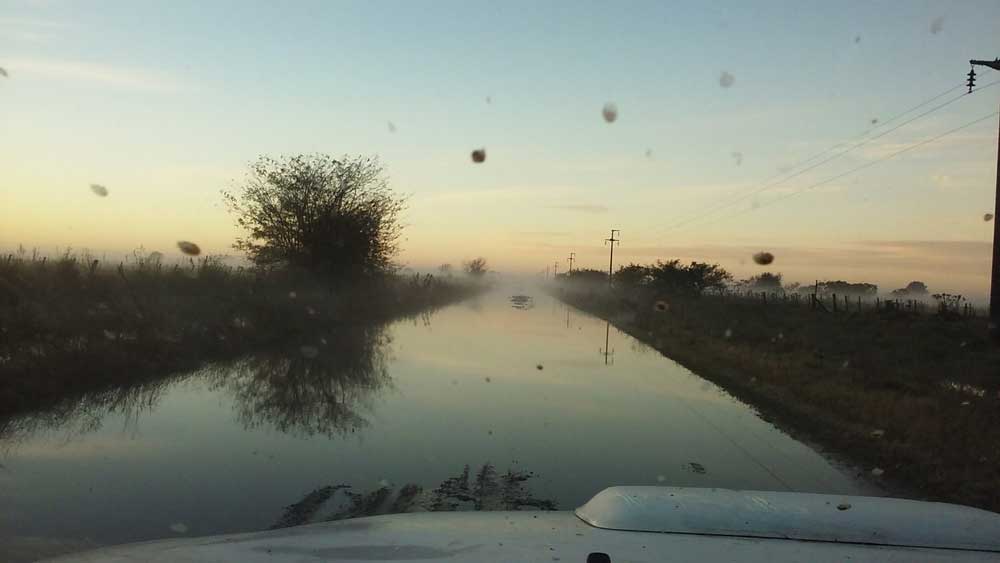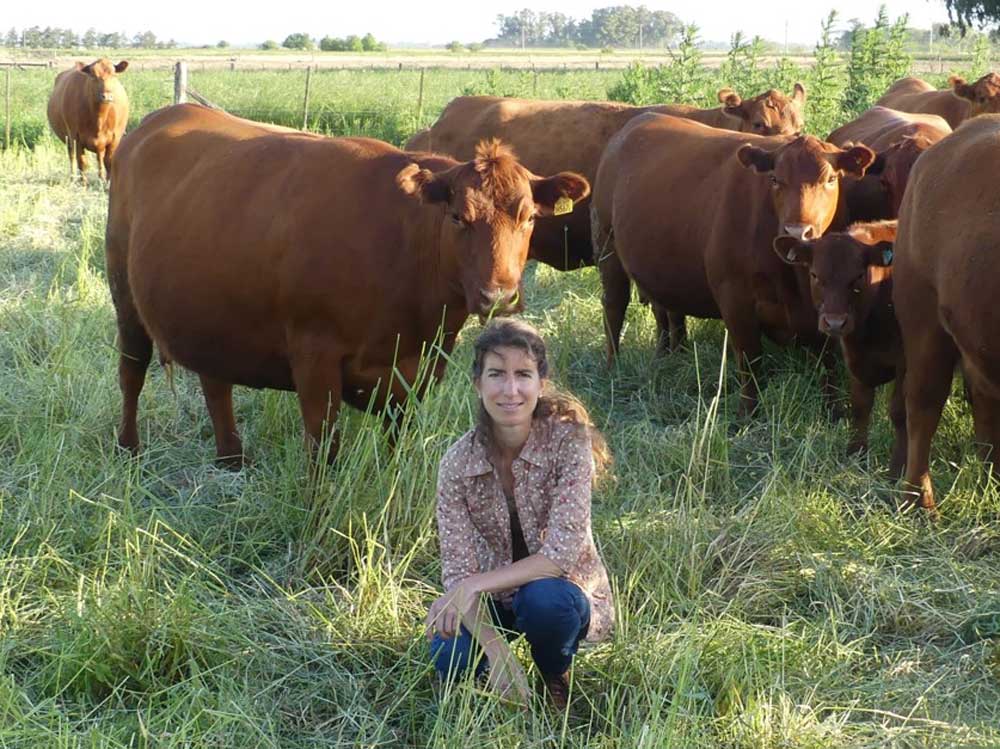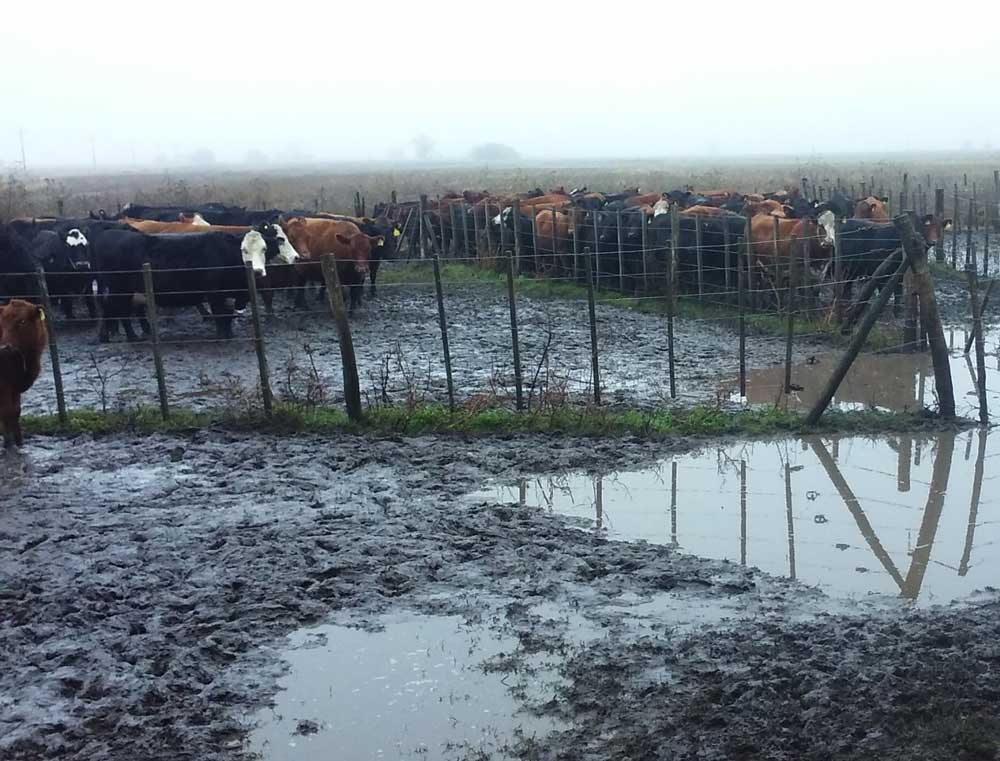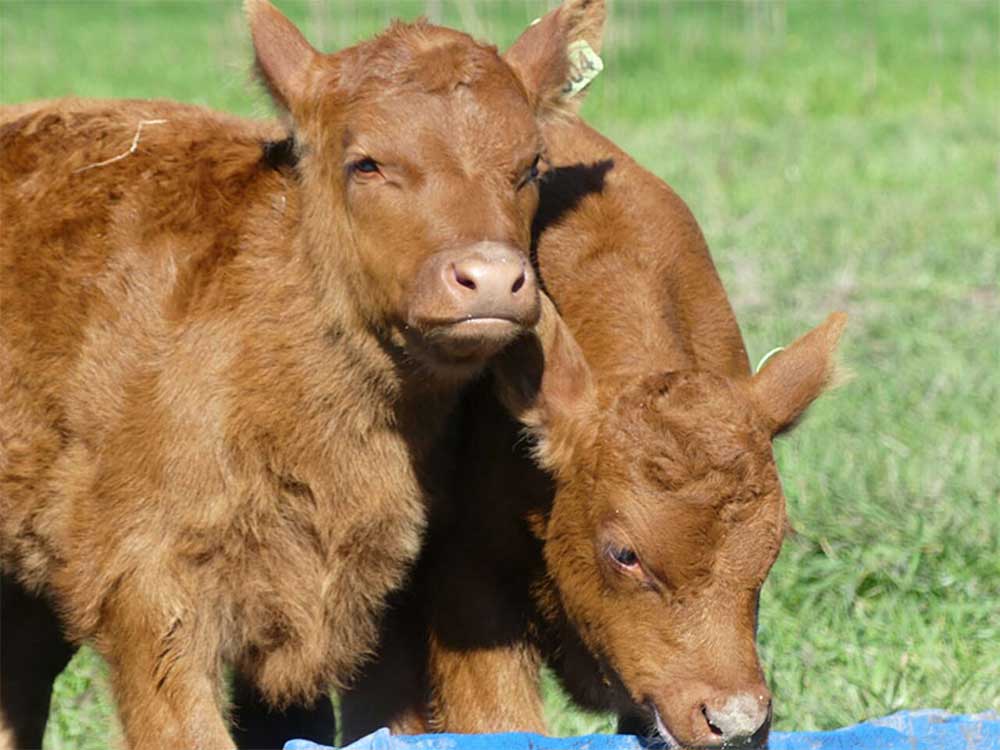Maren Ebinger - Veterinarian in Argentina
By Erminia Ciarleglio
Handling her 4x4 pickup for hours at a time along country tracks through sometimes axle-deep mud is a skill Maren Ebinger has had to learn visiting her dairy farm clients often well over 100 km from her surgery. She also brings plenty of practical knowledge on her professional visits because this vet comes straight from her own 500-cow family farm each day. »My father is German, and I only came to Argentina as a child. But my mother’s family has farmed for generations here, producing milk and growing maize, soybeans and wheat«.
1 Maren Ebinger, a vet’s life seems to be a bit more challenging in your country. Please tell us about your job and working day in Argentina.
Well, first of all, I’m based on the family farm where two of my sisters also work. Milk production is a major enterprise and I specialise in the health and nutrition of dairy cattle with a focus on the care of the calving cow and rearing of young stock.
Back home, I’m naturally responsible for herd health and have designed and established health, nutrition and breeding protocols to make management a little easier. Over the years, this has given me a sound basis for introducing the same care systems into the many other dairy herds I work with as a professional. When visiting them, my day usually starts at around 5 am because my customer radius covers 80 to 150 km, although a few farms are as far away as 450 km! The roads quickly change to field tracks, either dusty or very muddy when the rains come. Farms are comparatively large though, with from 400 to 800 milking cows, and this helps make commercial sense of each long road journey.
2 As dairy herd specialist, what kind of farm businesses do you help look after and what are the main health problems you face every day?
As mentioned, these are fairly big enterprises stretching from 400 to 600 ha. Very few herds have ever seen the inside of a barn here. Most cows are out on pasture the year round.
But grazing is nearly always supplemented with silage, mostly from maize, mixed with grain maize and protein sources such as soybean and sunflower meal with everything fed as a total ration. Holsteins are almost exclusively used in the big milking herds. Milking is twice a day. Most parlours are herringbone. My customer herds produce an average 23 to 25 l/cow per day over the year (up to 9000 litres). As far as cow health is concerned, sound feet and legs are crucial because big herds mean often long treks to grazing each day. Up to 2 km from parlour to paddock is not uncommon. Udders also suffer from these long walks. Hardiness in milking stock is also needed because of the climate. The Holstein milkers are exposed to very high temperatures through our summers so I prioritise high-capacity drinking water supplies and sprinkler systems for keeping cows cool in the parlours.
But for the calves I establish routines that actually start with penning and preparation of cows prior to calving. This formalisation of management for the young animals is crucial, I feel. An important factor is training of staff in appropriate hygiene and health management. Main diseases to look out for here are diarrhoea and bovine influenza. In our dairies, most calves are separated from their mothers within 24 hours of birth, but I emphasise the importance of a first drink or two of colostrum to build-up antibodies. Generally, the calves stay outside in individual pens until weaning at eight weeks. Youngstock are then run in groups on hay and concentrates, being moved on to grazing at around four months. Ideally, insemination is at 15 months with first calving at 24 months.
Yes, beef is still crucial to countryside economics. However, things have changed in the last 30 years. Feedlots have been introduced, with cattle finished on grain rations in compounds – just like in many other parts of the world. Free ranging cattle herds are less common. Beef export has also undergone big changes in the last two decades.The prices farmers can earn for their beef cattle were for a time capped. Export levies also resulted in farming being less lucrative. One result is that cattle numbers reduced until quite recently. Now, though, new export programmes are being introduced. Trade in beef and other farm produce has definitely increased.
Nor has dairying been given any advantages by the Argentina government in the last decade: milk prices have been low and dairy product exports regulated by quotas. Production costs have increased. Long-term credit is hard to come-by. One result is that many dairy farming businesses – mostly small or medium sized – have simply given up.
Oh yes! I love my profession - and the wonderful countryside here! Despite all the economic difficulties, our farming industry is actively progressive. Some two years ago the first robotic milking system was introduced and less than 24 months later there are now at least 10 systems up and running. Digitization is making farming, and my work too, easier and much more precision led. Now, for instance, I can continuously follow and analyse production, nutrition and fertility in many of the herds I look after via Internet by laptop. One of my dairy farms now has automated calf feeding: saving labour and precisely recording milk fed and weight gain, as well as other factors, with all information also on-line.
On the other hand, there’s considerable rural depopulation, with the disadvantages this brings. Our nearest village is 8 km away. There’s no doctor and not even a filling station there. For me as a professional, this is where DLG membership keeps me right in touch internationally. Every month I get the »DLG Mitteilungen«, and the DLG Newsletters regularly per Email. I read these with great interest, especially the articles on cattle and dairy farming economics. I also visited EuroTier in 2016. I might have to drive along a 35 km dirt road to our family farm, but these connections with Germany keep me right up to date!








